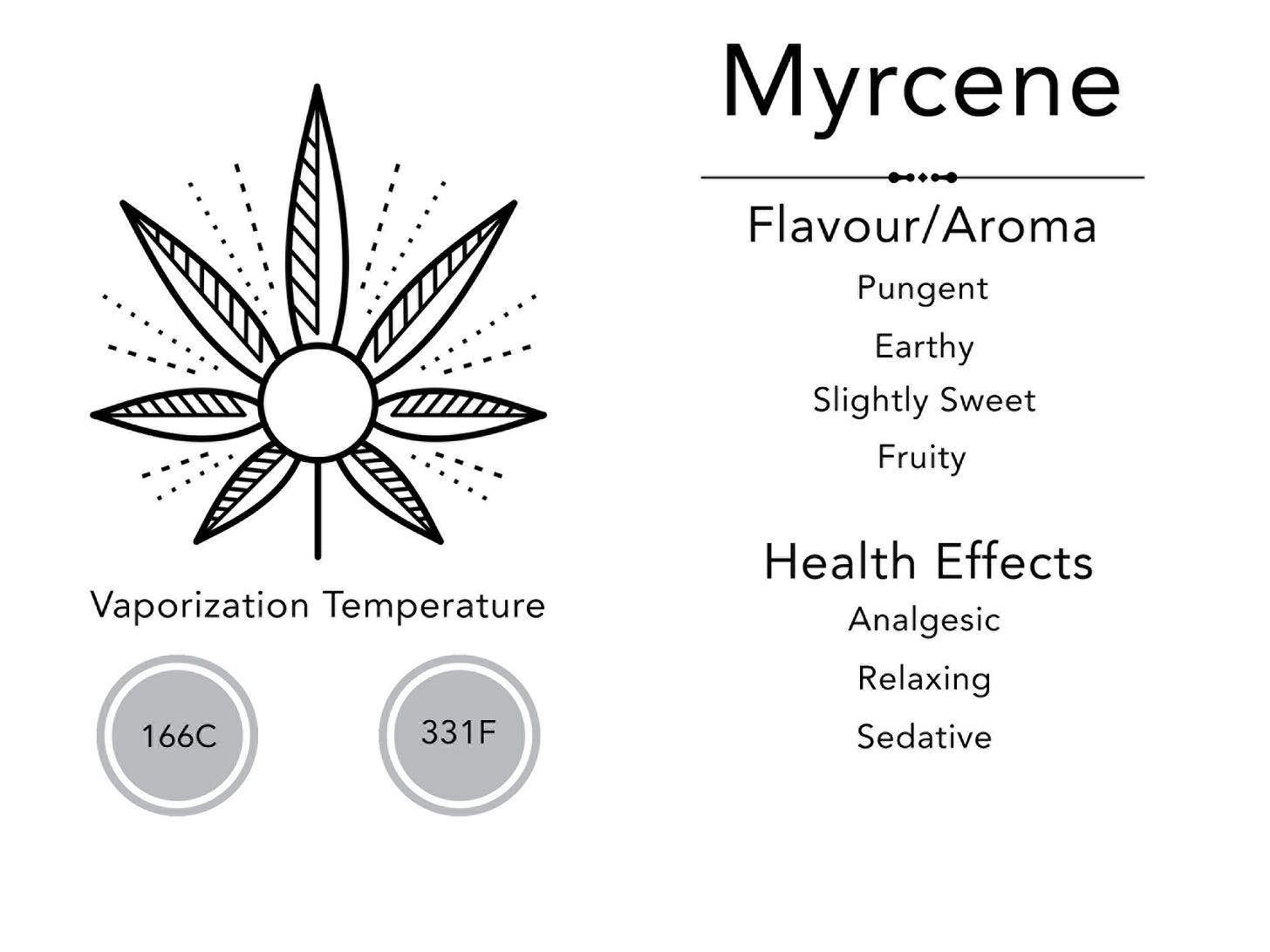Terpene of the Month: Myrcene | AusCannaReviews
Myrcene The Most Abundant Terpene Found in Cannabis
It’s the first Monday of the month and I’m introducing a new feature article called Terpene of the Month. Each month you’ll learn a little bit about terpenes as a whole while we focus in on one particular terpene (at a time) and the roll it plays in the effects of your medication.
Terpenes are organically occurring chemical compounds found in more advanced plants. As the plants evolved they began to produce larger amounts of terpenes which ultimately began acting as the plant’s defensive mechanism.
Terpenes can also be found in some animals such as koalas, squirrels, and more recently in soft coral.
In female medicinal cannabis plants terpenes are found in the trichomes and are responsible for the smell and taste of your flowers. Trichomes are the sticky, translucent glands covering the flower buds' surface and can also be found in smaller amounts on the leaves and stems.
You’ll often hear me refer to the Sticky Icky Test. This is a slang term popularised by a Dr. Dre and Snopp Dogg song, “Still D-R-E” and is a reference to the sticky nature of trichomes. The belief is that the more sticky icky your buds are, the more trichomes, which means an abundance of terpenes and thus better overall effects.
While it’s still a relatively new concept the “Entourage Effect” is the suggestion that it’s better to consume the cannabis plant holistically rather than being focused on just THC or CBD because terpenes play a key roll in enhancing the medicinal benefits of each particular strain. (We’ll take a deep dive into this topic in another post.)
Terpenes are highly volatile and can easily evaporate. While lots of people like to use the terms “terpenes” and “terpenoids” interchangeably… Terpenoids are actually the oxidised state of terpenes. Just like leaving a cut-up avocado, apple or banana on the countertop will eventually turn brown, terpenoids are the byproduct of a chemical reaction between oxygen and the terpenes during the curing/drying process, accounting for their difference.
Terpene profiling is the only way to truly identify what cultivar you have and its medical efficacy.
This month the terpene we’re going to look at is Myrcene. Myrcene is the most abundant terpene found in modern commercial cannabis plants and I thought it would be a great place to start.
Myrcene has a pungent, earthy aroma somewhat similar to cloves. It has a slightly sweet and fruity taste that’s often described as ripened mangoes. Cultivars high in Myrcene often have hints of spice and fruit. Found in mangoes, hops, ylang-ylang, guava and lemongrass, Myrcene is believed to produce a calming effect and is also thought to have analgesic (pain relieving) properties.
There’s a long history of Myrcene being used in folk medicine.
In Mexico, lemongrass infused tea has been used as a sedative and muscle relaxant. Lemongrass tea has also been used in Brazilian folk medicine for their belief it has anti-anxiety and pain-relieving properties. A study on mice published back in 1990 by scientists in Brazil concluded that Myrcene reduced pain by increasing the brain and spinal cord’s own opioid chemicals. However, this study has been hotly contested. Also something to remember, not everything that works in animals will work in humans.
Hops, which is heavy in Myrcene, is commonly used to this day by holistic doctors in Germany as a sleep aid and even has the approval from the German government for such use. I could only find one study from a trusted source on this topic but it should be noted this was an “review paper” where they simply gathered information from other peer reviewed literatures. Noted in the conclusion, “Few studies conducted in humans were found and these included humans inhaling essential oil extracts containing Myrcene. Thus more robust, randomised, controlled clinical trials/intervention studies are needed to evaluate and replicate Myrcene’s beneficial effect in humans.”
So where does this leave us? As noted above there needs to be more research done on terpenes and their effects on the human body. And just like a lot of things about cannabis your personal experience varies greatly based on your endocannabinoid system. Next month we’ll take a look at Caryophyllene.
If you’re looking for medicinal strains on the Australian market that are high in Myrcene… (Information comes from COA listed on honahlee.)
SatiVite Kannbi 25 LSO (2.05% Myrcene)
MEDCAN Australia Cold Creek Afghan Kush (0.86% Myrcene)
MEDCAN Australia Wappa49 (0.79% Myrcene)*
SOL SOL Northern Lights (0.66% Myrcene)
MediGrowth Australia Haiiku22 (0.51% Myrcene)
Blue Mountain Global Blue Mountain THC 19 Indica (0.47% Myrcene)
MEDCAN Australia Strawberry Cake (0.47% Myrcene)
SatiVite Nula Nula 21 (0.45% Myrcene)
Cannatrek T20 Torquay (0.39% Myrcene)
Kind Sol 1:16 (0.33% Myrcene) (Low THC/High CBD)
Editor’s note: Beacon Medical’s Wappa only had 0.06% Myrcene, which is why it didn’t make the list.





Great work! 😎